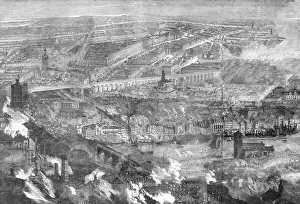Combustible Collection
From the Great Fire of Newcastle and Gateshead to heroic firefighters at Wansdown Place, London SW6, combustible elements have shaped our history
All Professionally Made to Order for Quick Shipping
From the Great Fire of Newcastle and Gateshead to heroic firefighters at Wansdown Place, London SW6, combustible elements have shaped our history. In a chilling engraving, we witness the horrifying fate of Christians set ablaze on a vessel filled with combustible materials. The bravery and resilience of firefighters at Crabtree Lane and Wansdown Place cannot be overstated as they battle against raging infernos fueled by these volatile substances. Fire safety is paramount even in our most vulnerable moments, like bedtime. Teaching children about the dangers of combustion ensures their protection. Looking back in time, we find records from the French Republic detailing declarations of quantities supplied - hooilles and cokes igniting Paris' streets. Innovation has also played its part in harnessing combustibles for convenience. The Phenix's Oxigene Double Pate Lighter revolutionized fire-starting methods while Joseph and Cie Sr de Colondon provided fuel solutions that kept flames burning bright. Through triumphs and tragedies alike, one thing remains clear: respect for combustible materials is essential. Let us honor those who fought fires throughout history and continue to prioritize fire safety measures today.














